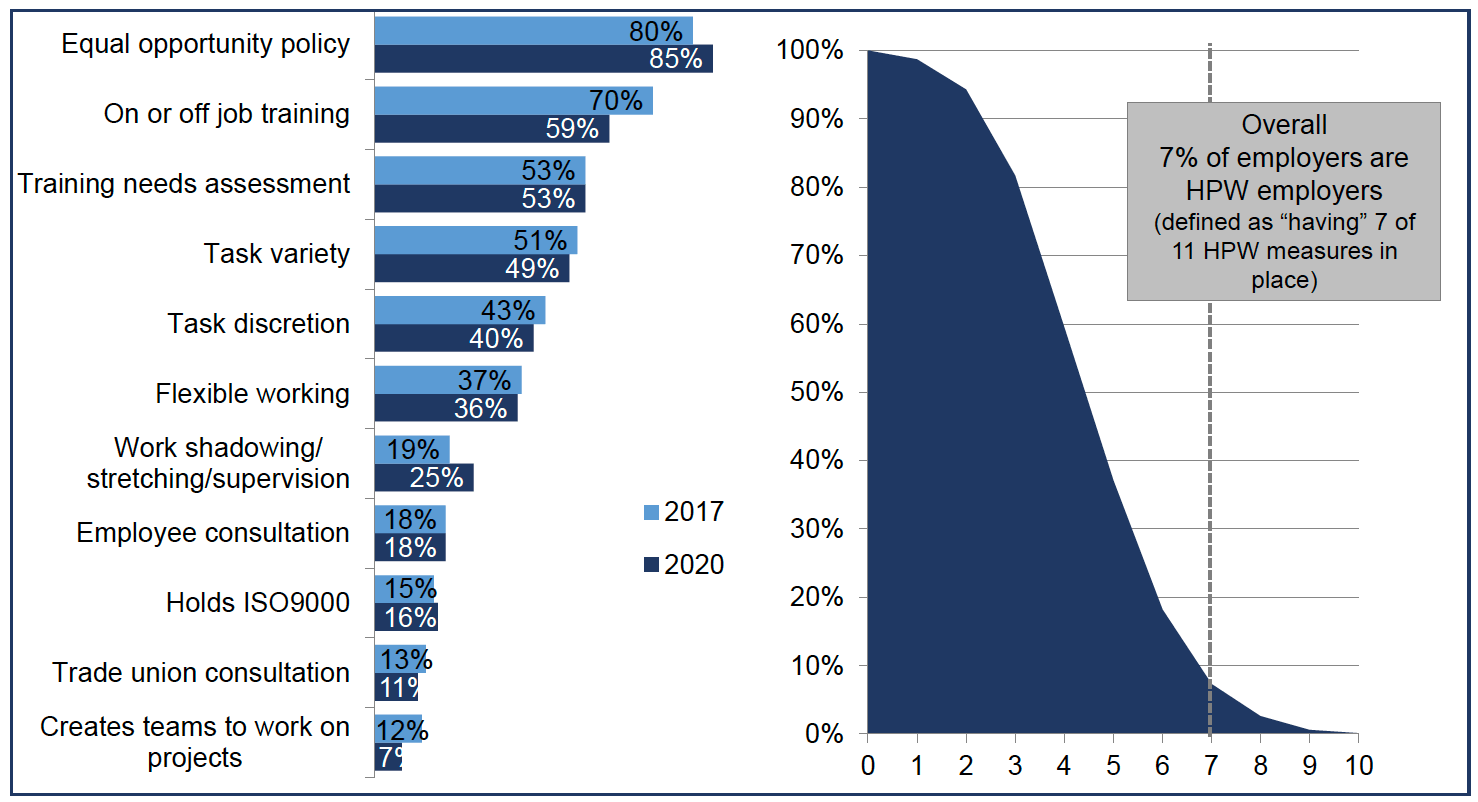Scottish Employer Skills Survey 2020
Results from the Scottish Employer Skills Survey 2020.
High Performance Working Practices
Overall, 7% of employers adopted 7 or more High Performance Working practices.
"High Performance Working" (HPW) practices are practices recognised to ensure employee skills are harnessed and nurtured and used to their best effect. To be classed as a "High Performance Working employer" an establishment must have adopted 7 or more of the 11 practices covered by the survey.
When looking at individual HPW practices, several were less common than in 2017, including on or off the job training (59%, down from 70%), trade union consultation (11% down from 13%) and creating teams to work on projects (7% down from 12%). Contrastingly, a greater proportion of establishments had an equal opportunity policy (85%, up from 80%) and offered work shadowing (25% up from 19%) than in 2017.

Base: 2020: All establishments (3,497); 2017: All establishments in Module 1 (2,953).
The proportion of "High Performance Working" employers varied considerably by employer size. Just 2% of employers with 2-4 staff could be categorised this way, compared to 47% of those with 100 or more staff.
The actual practices employers utilised also differed by size. The smallest employers (with 2-4 staff) had a very different pattern of HPW practices than their larger counterparts.
These employers were more likely to offer practices relating to staff autonomy in the form of task variety, task discretion and flexible working than employers with 5 or more staff (56%, 49% and 46% respectively vs. 42%, 30% and 26% among those with 5 or more staff). Smaller employers were also more likely to offer work shadowing with 30% of those with 2-4 staff and 24% with 5-24 offering this, compared with 9% of employers with 25 or more staff.
These small employers were, however, far less likely to offer training to staff (45%) and far less likely to have formal policies in place, for example just 38% conducted training needs assessments, 78% had an equal opportunities policy in place, 10% had an ISO9000 accreditation and just 7% consulted with trade unions.
High Performance Working employers (utilising 7 or more of the 11 practices measured) were most common in the Public Administration (30%), Education (22%) and Health and Social Work (17%) sectors. They were least common in Construction (3%).
Further details on the proportion of employers classified as "High Performance Working employers" can be found in Table 69 of the Background Tables.
Contact
Email: FHEstatistics@gov.scot
There is a problem
Thanks for your feedback